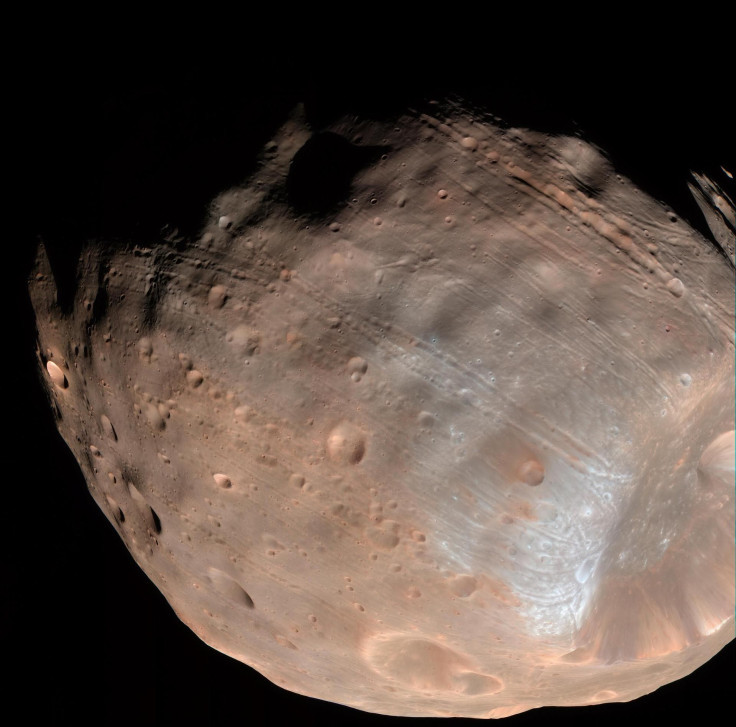Solar Wind Is Dangerous To Space Probe Visiting Mars Moon Phobos

The sun could make it difficult for astronomers and spacecraft to explore the moons of Mars.
NASA explained that the solar wind, the stream of electrically charged particles that the sun blows out toward planets, creates a potentially hazardous condition for the scientific equipment that would land on the irregularly shaped moons, Phobos and Deimos.
“Because it has no atmosphere and no magnetosphere, Phobos plows directly into the solar wind for part of its orbit,” the space agency said. “Phobos absorbs the solar wind on its day side, leaving a void over its night side.” Over there, “electrons … rush in to fill the void,” creating a static charge.
The same effect is visible in the partially obscured craters on the moon’s surface.
Here on Earth, where we have our atmosphere and magnetosphere to protect us, an intense solar wind could disrupt satellite communications and create the colorful light displays in the skies of northern latitudes called auroras or northern lights.
Phobos in particular has been a target for astronomers. It was announced earlier this year that France’s National Centre for Space Studies and the Japan Aerospace Exploration Agency are working together on the goal of launching a probe to Phobos, the larger of the two moons, in 2024. It would bring samples back to Earth that could help scientists better understand the moon’s origin.
There are different ideas about how Phobos and Deimos came to be, one of them being that they are asteroids that got caught up in the gravitational pull of Mars, due to their small sizes and oblong shapes — their longest sides are about 17 miles across, for Phobos, and 9 miles across for Deimos. Others say they are leftovers from the collisions of material that created Mars.
The samples that would be returned from a potential Phobos space probe would be the first brought back from a place beyond Earth’s moon. And landing on Phobos would create an interesting vantage point for studying Mars itself.
Being able to explore Phobos could also help scientists understand its little moon brother, Deimos.
Russia previously tried to send a probe to Phobos but the spacecraft never made it off Earth.
Assuming a spacecraft successfully made a trip to the moon, “roving around on the night side or within shadowed craters could build up static electric charge, possibly affecting sensitive equipment,” NASA said. “Mission planners will have to face this challenge as they set their sights on the moons of Mars.”
Phobos won’t be there forever. Scientists estimate that in the future it will either break apart or crash down onto Mars. In addition to the moon getting closer to the planet all the time — about 6 feet every century — it also shows signs of wear and tear from the gravitational pull of Mars. That force has created long grooves on its surface, what NASA has called “early signs of structural failure that will ultimately destroy this moon.”

© Copyright IBTimes 2024. All rights reserved.



















